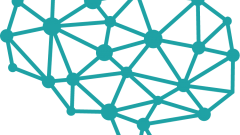Service access networks at 3- and 6-months after discharge from brain injury rehabilitation: an egonetwork analysis
Published 24th June 2025
Purpose: To map the 3- and 6-month post-acute rehabilitation and healthcare networks from the perspective of people with Acquired Brain Injury and examine how these relate to funding provision and participation in a specialist transitional rehabilitation service.
Materials and methods: Fifteen adults with an Acquired Brain Injury (mean age 43; range 20–63) participated in semi-structured telephone interviews at 3- and 6-month post-discharge from inpatient rehabilitation with a total of 29 interviews conducted. The interview guide was based on a social network framework and data were obtained regarding the composition, size, density, and stability of networks.
Results: Results indicated that participants’ networks ranged from 3–10 health professionals. Five typologies were apparent including cohesive, cluster, core, star, and kite network. Participants’ networks generally decreased in size and density at 6-month post-discharge. The networks of participants were varied, and differences in network measures were observed when comparing those who were funded by National Injury Insurance Scheme-Queensland and National Disability Insurance Scheme and those that did or did not attend Transitional Rehabilitation Service.
Conclusions: The study highlighted the diversity of individuals’ personal networks when assessing their composition and structural characteristics. Through the study, a deeper understanding of the networks and individuals’ experiences of service provision under the existing funding and program frameworks was developed.
Citation:
Kirsty Laurie, Louise Gustafsson, Michele M. Foster & David N. Borg (10 Jun 2025): Service access networks at 3- and 6-months after discharge from brain injury rehabilitation: an ego-network analysis, Disability and Rehabilitation.
Project:
Trajectories of Rehabilitation across Complex Environments (TRaCE)
Authors
Publication Type
Journal Article
Themes
Back to Project


